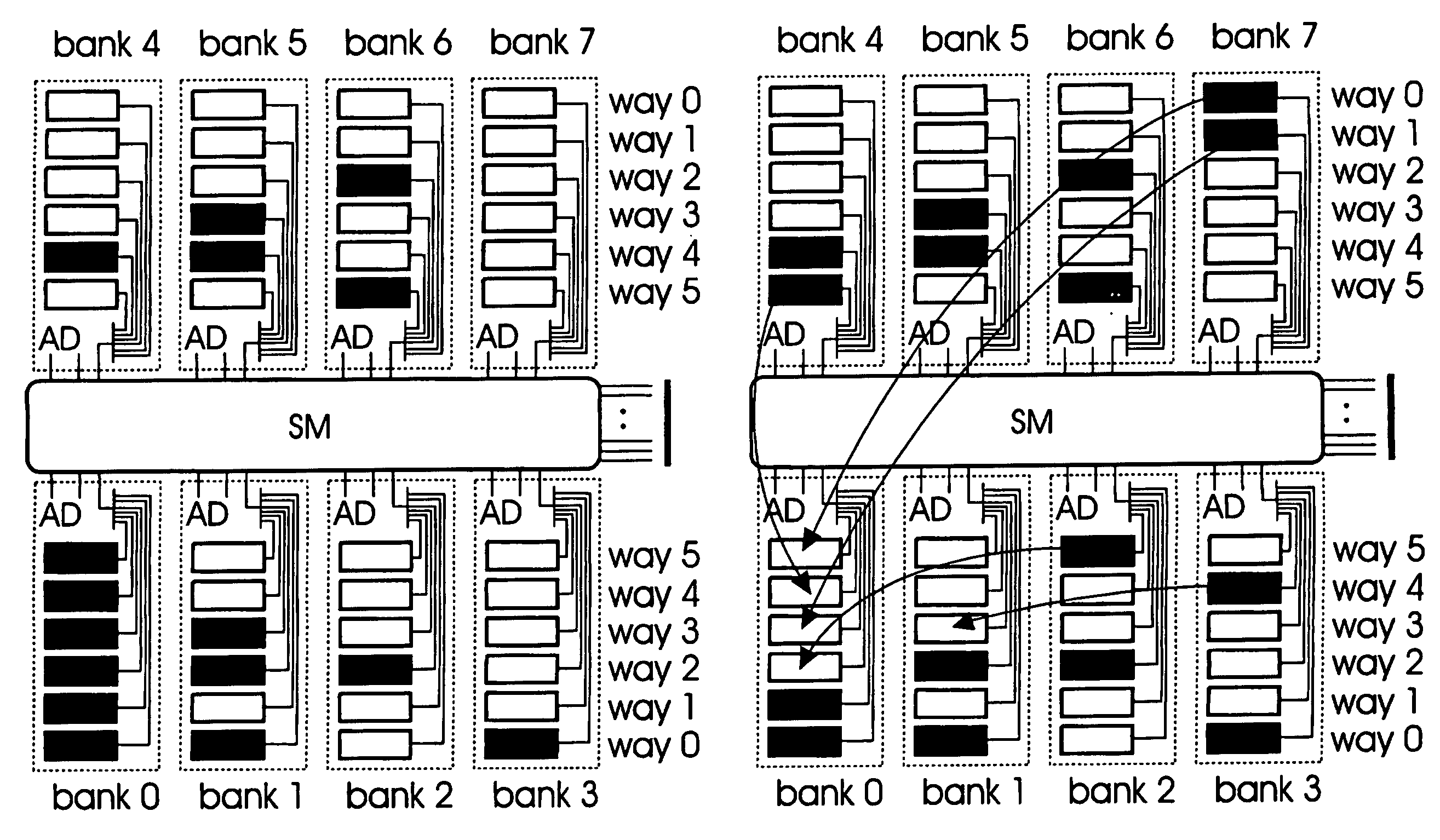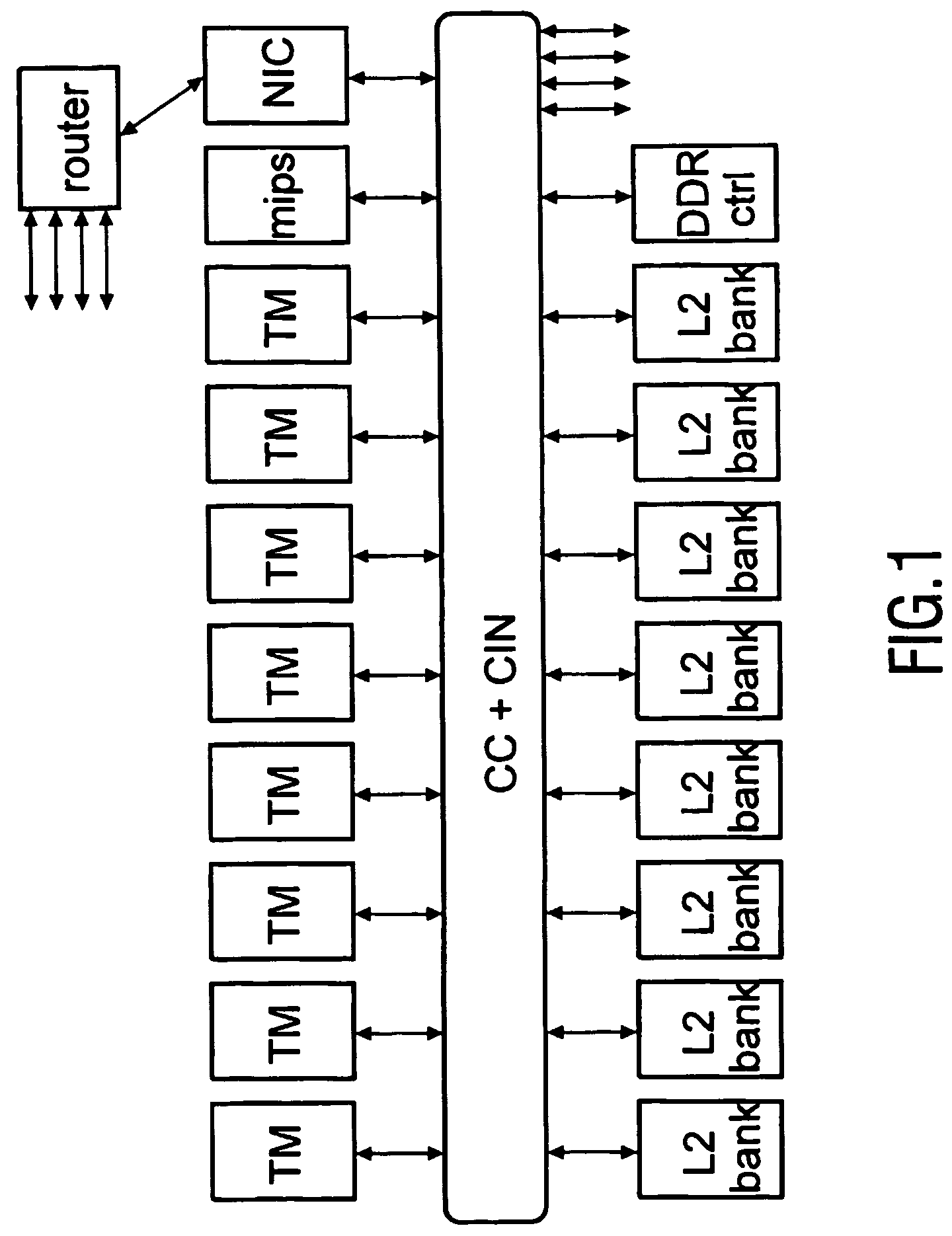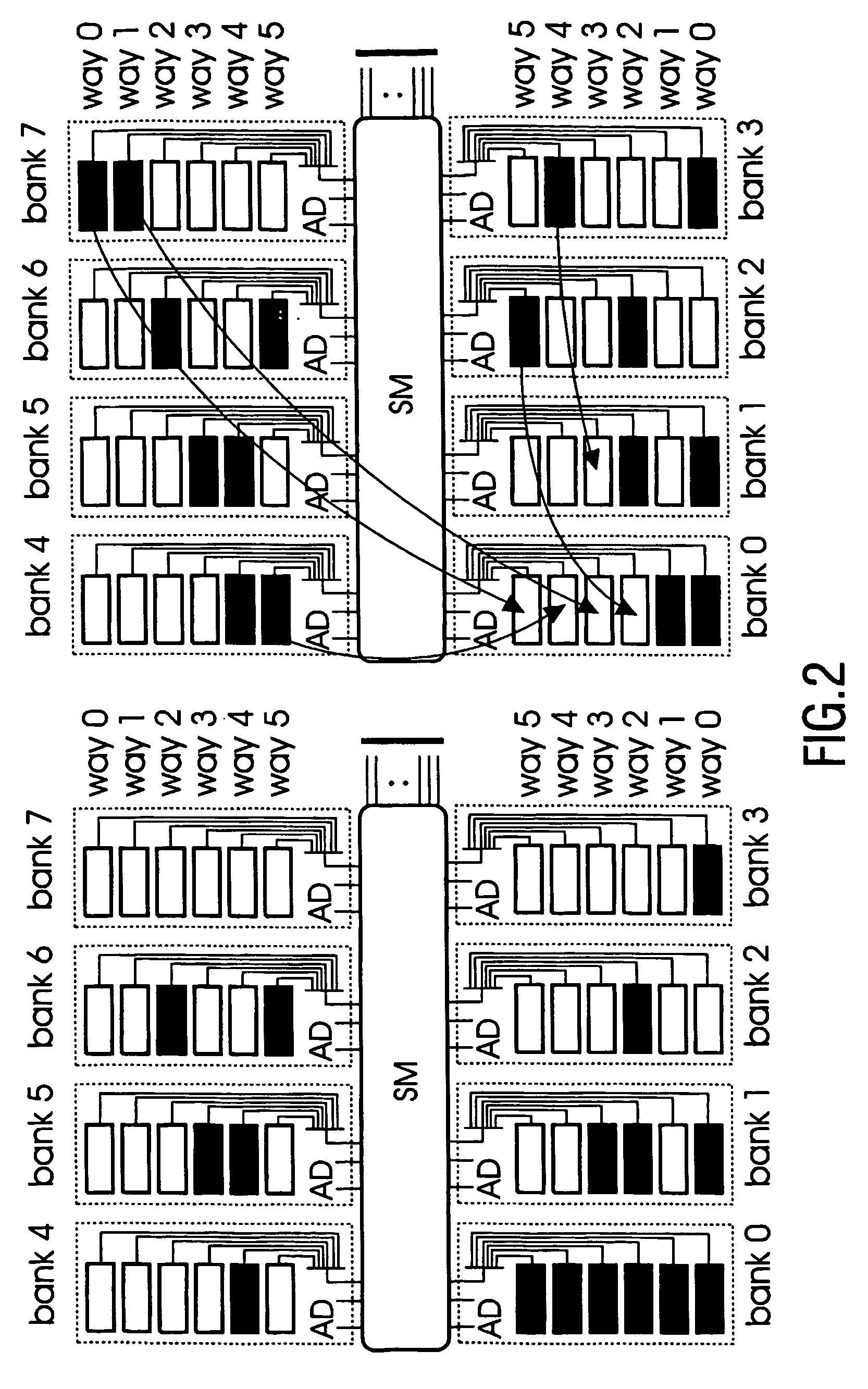Intergrated circuit and a method of cache remapping
a technology of integrated circuits and caches, applied in the direction of memory adressing/allocation/relocation, error detection/correction, instruments, etc., can solve the problems of insufficient memory bandwidth, module faulty, and inability to meet the demand for memory bandwidth in recent high-performance vlsi processors, etc., to achieve less chip area and greater degree of freedom
- Summary
- Abstract
- Description
- Claims
- Application Information
AI Technical Summary
Benefits of technology
Problems solved by technology
Method used
Image
Examples
first embodiment
[0032]FIG. 3 depicts the select signal circuitry for the L2 cache according to a In FIG. 3 a tag RAM unit TagRAM, a remapping means RM, two registers R and a plurality of comparators C are shown in FIG. 3. The pipeline registers R receive the address Ad as input signal, while one register R provides a tag reference signal tag_ref as output, and the other register provides a bank selection signal bank_select and a word selection signal word_select as output. The tag RAM unit TagRAM receives the address Ad as input and outputs the signals tag0, . . . , tag5. These signals and the tag reference signal tag_ref are input signals of the comparators C, respectively, which output the hit signals hit0, . . . , hit5. These hit signals, the bank select signal bank_select and the word selection signal word_select are input to the remapping means RM, where the remapping operation is performed and the input signals are mapped to hit'0 , . . . hit'5, bank'select, and word_select representing the ...
second embodiment
[0036]The registers R in the second embodiment are not essential. The AND gates and OR gates occur 6*9 times and 9 times, respectively. However, this function may also be implemented for example using a multiplexer.
[0037]To further improve the performance of the selection circuitry according to the first and second embodiment, the cache hits and the cache line replacements should not target any faulty modules. In order to avoid this, a look-up table is preferably provided in the Tag RAM unit, but can also be implemented in the remapping unit RM or in the MAP RAM unit. The idea behind the look up table is to be able to avoid hits on all blocks of a faulty module, and furthermore to exclude such a module from being a replacement target. If the valid and lock bits are already implemented in a cache, the implementation of FIG. 5 is basically for free.
[0038]FIG. 5 shows a representation of such a table for a remapping according to FIG. 2. Faulty modules are marked as unusable by setting ...
fourth embodiment
[0041]In FIG. 6 a look-up table is shown, which represents a look up table of a combined map RAM and the tag RAM according to the Additionally, compared with the look up table according to FIG. 5, the table according to FIG. 6 comprises an extra column, i.e. the map column, for each way. This column contains the remapping information, e.g. the block at (index0,bank0,way2) gets remapped to (index0,bank2,way5), since the values 2 and 5 are written into the corresponding map field. In order to realise a cheap and fast implementation, a block is preferably not remapped to a different index, but merely to a new way and bank. However, the remapping may alternatively also be performed over several indexes.
[0042]The remapping means may comprise a programmable permutation unit which indicates the module-to-module mapping, a circuit using this permutation to reshuffle modules by recomputing module selects, and / or a mechanism to permanently invalidate the tag rams associated with a faulty mod...
PUM
 Login to View More
Login to View More Abstract
Description
Claims
Application Information
 Login to View More
Login to View More - R&D
- Intellectual Property
- Life Sciences
- Materials
- Tech Scout
- Unparalleled Data Quality
- Higher Quality Content
- 60% Fewer Hallucinations
Browse by: Latest US Patents, China's latest patents, Technical Efficacy Thesaurus, Application Domain, Technology Topic, Popular Technical Reports.
© 2025 PatSnap. All rights reserved.Legal|Privacy policy|Modern Slavery Act Transparency Statement|Sitemap|About US| Contact US: help@patsnap.com



